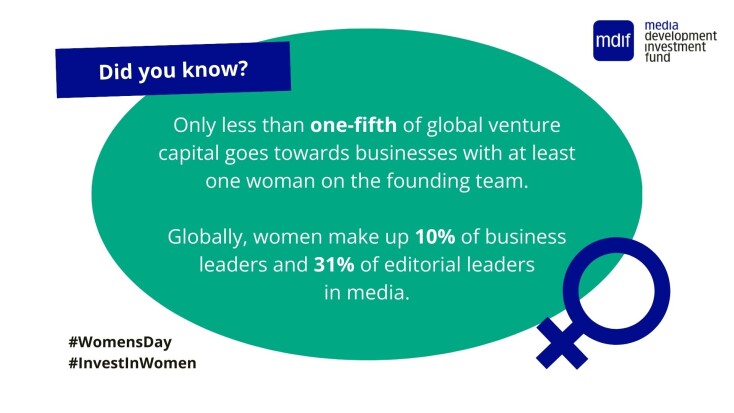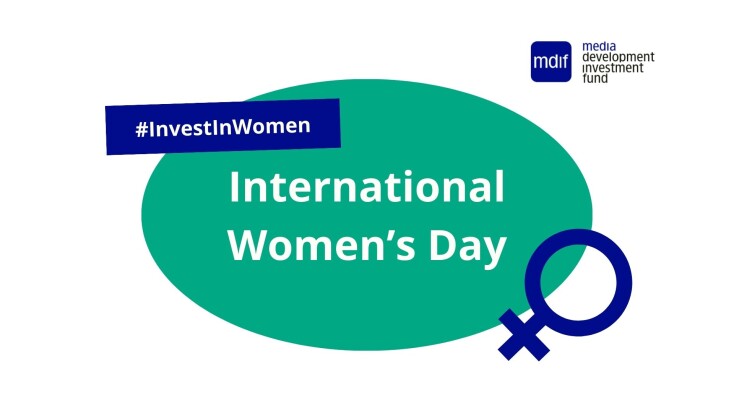On International Women’s Day, the global call to action echoes with heightened urgency: “Invest in women: Accelerate progress”. This imperative is underscored by the sobering realization that the outlook for achieving the gender equality goal by 2030 appears dim. The critical issue of inequality persists prominently across various facets of life, including the media industry.
A difference between perception and reality
A recent study by the Reuters Institute found that 90% of media leaders believe they are doing a good job with gender diversity. However, another study examining top editorial positions in 240 major news outlets across 12 markets reveals a disconcerting figure: only 22% of the 180 top editors are women. This marginal increase from 21% in 2022 is particularly alarming given that, on average, 40% of journalists in these markets are women. Even in countries recognized for their relatively low gender inequality according to the United Nations Gender Inequality Index, the representation of women in top editorial roles remains disproportionately low.
A WAN-IFRA study, analyzing data from 192 media companies across 17 countries, paints an equally disheartening picture, revealing that women occupy only 10% of business leadership roles and 31% of editorial leadership positions. Strikingly, in none of the markets surveyed did the proportion of women in top business positions surpass 25% and only in two out of the 17 markets did the percentage of women holding top editorial positions exceed 50%.
The business case for inclusivity
Inclusivity is not just a moral imperative; it is a strategic advantage. Studies consistently demonstrate that diverse teams can lead to increased innovation and team performance, as well as improve decision-making and employee satisfaction. There are also reports that diversity and inclusion in the workplace could make businesses more profitable. A recent study by Project Oasis specifically focused on the media industry highlighted a compelling correlation between gender-inclusive teams and financial success. Media outlets founded by teams comprising both men and women reported the highest average annual revenues, surpassing those with exclusively male or female founders.
Balanced newsrooms play a pivotal role in fostering audience trust and enhancing the journalistic product. Not only can this contribute to successful conversions but also helps amplify audience engagement, particularly among women. Anecdotal evidence further suggests a correlation between balanced newsrooms and increased subscriptions, listenership and open rates for newsletters.

Investment challenges facing female leaders
According to the World Bank, in 2021 only 14.5% of global venture capital was directed towards startups with at least one woman in the founding team. The situation is even more pronounced in emerging markets, where women-led startups receive a mere 7%.
The data shows that female-founded teams are receiving a disproportionately low share of funding compared to all-male teams. The positive news is that the share is constantly increasing, but a significant gender gap remains.
Joanna Różycka-Iwan, MDIF’s Chief Investment Officer.
According to PitchBook, US female-founded companies secured a record 28% of total venture capital deal value in 2023, up from 19% the previous year. In Europe, they accounted for a record 20.5%, marking a 36% increase from 2022, the sharpest since 2012.
Female founders face unique challenges in obtaining vital funding for business advancement, particularly due to the prevalent underrepresentation of women among decision-makers in the male-dominated venture capital landscape. PitchBook data reveals that women constitute just under 20% of decision-makers among investors providing capital to new businesses in the United States, and slightly over 15% in Europe within venture firms.
“Increasing the number of women managing the funds would be beneficial both for the ecosystem and female-founded ventures,” said Różycka-Iwan. As the CIO at MDIF, she holds the pivotal role of overseeing and managing the portfolio and making strategic investment decisions.
The struggles female media leaders encounter in fundraising
Challenges persist within the media industry too. Anecdotal evidence from Project Oasis underscores the fundraising hurdles faced by media organizations with female founders, attributed to a scarcity of women in key investment decision-making roles and a heightened investor aversion to risk associated with women-led companies.
Two experienced female Senior Investment Officers at MDIF affirm the pervasive presence of stereotyping and unconscious biases within the investing space.
“One of the biggest obstacles faced by female-owned companies seeking investment is the prevalence of an inherent bias that questions their leadership abilities and business value,” said Mayura Gangan. “Female owners must work twice as hard as their male counterparts to convince funders of their competence and ability to build a successful and enduring business,” added Lebogang Maphada.
What advice would they give to media organizations with female founders seeking investments when fundraising?
“The key is to acknowledge that gender bias exists and be ready to counter it with facts, data and experience,” said Maphada. “Nothing speaks louder than the track record of success.” Moreover, cultivating a robust support network is invaluable. “Female entrepreneurs should look at continuously building a network of mentors and other industry professionals and stay resilient through their entrepreneurship journey,” said Gangan.
MDIF‘s commitment to gender equality
MDIF’s dedication to equality is evidenced in our workforce statistics, where more than 50% of our staff, management and Board members identify as women. Among our clients, the most recent data indicates that women comprise 49% of staff, 62% of management, and 50% of newsroom leadership positions, including editors-in-chief, editors, heads of department and heads of desks.
In our 27 years of operation, we have invested in numerous women-owned and women-run news businesses, including, among many, Philippines digital outlet Rappler, Kosovo’s leading independent broadcaster RTV21, Peru’s regional news outlet El Búho and Media Alternativa’s TV8 in Moldova.
Yet, while inclusivity is deeply embedded in MDIF’s values, the journey towards gender equality demands collective and sustained action from us all. We urge you to stand with the UN in support of the call to action, “Invest in women: Accelerate progress,” using the #InvestInWomen hashtag.
